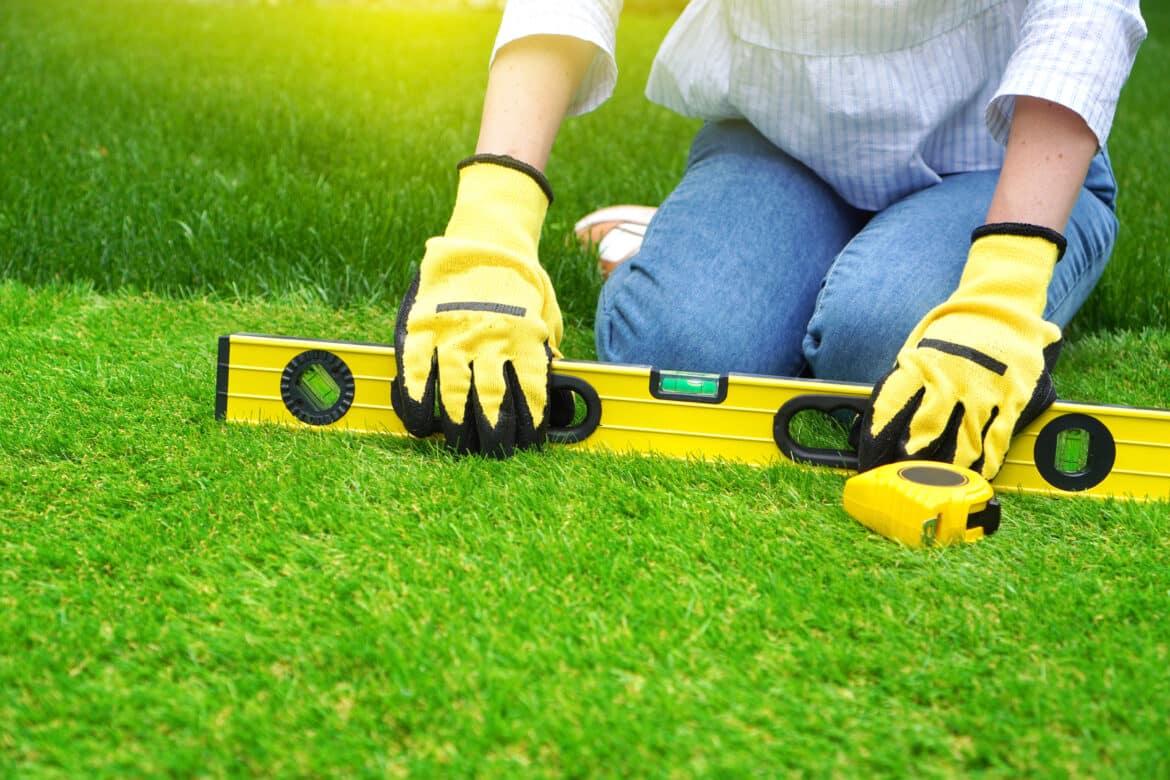
Best Practices for Leveling Yards: Essential Landscaping Supplies for Pros
Leveling a yard is one of the most effective ways to improve both the appearance and functionality of an outdoor space. Whether it’s correcting drainage problems, creating an even surface for sod installation, or preparing a base for future landscaping, understanding the right approach is crucial for professionals. From assessing uneven areas to selecting the correct landscaping supplies, every step impacts the final result. (Source: Better Homes & Gardens, How to Level a Yard by Removing Bumps and Divots, By Timothy Dale, Published on January 24, 2024, https://www.bhg.com/how-to-level-a-yard-8425684 ).
Assessing Uneven Areas
Identifying whether a yard is uneven starts with simple tools—stakes, string, and a level. Measuring the grade across 100 feet provides a clear picture of dips and bumps. A gentle slope of around ¼ inch per foot away from the house is ideal to ensure proper drainage. Mild unevenness under an inch can usually be corrected with topdressing, while more significant dips or rises require lifting sod and regrading.
FSI Landscape Supply shares, “Experienced landscapers know that a thorough site assessment saves time and prevents costly rework. Measuring the grade accurately gives you the data to decide how much sand, topsoil, and grass seed will be needed. For slight dips, a fine blend of sand and topsoil applied in a thin layer is often enough to smooth the surface. When irregularities are deeper, it’s better to plan for proper regrading, lifting sod where necessary, and redistributing soil before finishing with a topdressing mix. Skipping this step leads to uneven settling, which can cause pooling and turf stress down the line.”
Timing and Site Preparation
Leveling is best performed in late spring or early fall, when soil is workable, and turf can recover quickly. Preparation includes watering to dampen the soil, mowing short, removing thatch, and conducting a soil test. The soil type determines the topdressing blend—compost for clay soils, a topsoil and compost mix for loamy areas, or a balanced mix including sand where improved drainage is required.
FSI Landscape Supply notes, “Season and prep work directly impact the success of leveling projects. Late spring and early fall provide optimal temperatures for grass seed germination and root establishment. We recommend always starting with a soil test; this ensures the mix ratio is tailored to the site’s needs. Clay-heavy areas often benefit from compost to improve structure, while sandy soils may need organic matter to boost nutrient retention. Proper mowing and dethatching create a surface where the topdressing can settle into the turf canopy, rather than forming a layer that suffocates the grass.”
Choosing the Right Tools and Materials
Professional-grade tools like rakes, shovels, wheelbarrows, push brooms, hoses, and sprinklers streamline the job. The essential materials include sand, topsoil, compost, and high-quality grass seed. These elements are the foundation for creating a smooth, healthy lawn surface.
FSI Landscape Supply shares, “Selecting the right landscaping supplies is as important as the technique. A coarser sand mixed with screened topsoil gives the perfect balance of drainage and stability. Using a push broom helps sweep the mix into the turf canopy, ensuring even coverage without smothering existing grass. High-quality, region-specific grass seed should always be part of the process to promote dense, uniform growth in filled areas.”
Making the Topdressing Mix
The topdressing mix should be tailored to soil conditions. For clay soils, compost helps loosen compaction. Loamy soils benefit from a topsoil and compost mix, while areas with poor drainage may require adding sand to the blend.
FSI Landscape Supply highlights, “Getting the ratios right is essential. In practice, we often recommend a blend with up to 30% sand for projects where settling speed and drainage are key factors. Too much sand, however, can dry out the soil quickly, while too much compost can cause sinking over time. The ideal mix creates a surface that stays firm while supporting strong grass seed germination.”
Fixing Bumps and Depressions
For moderate unevenness, lifting sod allows landscapers to adjust soil levels precisely before replacing it. Soil removed from bumps can be used to fill depressions, making the process efficient and cost‑effective.
FSI Landscape Supply comments, “When dealing with more pronounced dips or humps, cutting and lifting sod is worth the extra effort. Removing excess soil from high spots and transferring it to low spots minimizes material waste. Once adjustments are made, applying a thin topdressing blend and reseeding ensures uniform growth and a smooth finish. Taking this extra step separates a quick fix from a lasting professional result.”
Spreading and Watering
After filling dips and smoothing bumps, spread the topdressing in a thin, even layer—around ¼ to ½ inch deep. Rakes and brooms help feather the mix into the grass. Finally, water the area to settle the soil and encourage seed germination.
FSI Landscape Supply notes, “Less is more when applying topdressing. Exceeding ½ inch often smothers grass and leads to patchy recovery. Once the mix is in place, a light watering settles the sand and topsoil, filling any air gaps and helping the grass seed bond with the existing lawn. Continued light watering over the next few weeks ensures even germination and root establishment.”
Key Takeaways for Professionals
Accurate grading, proper timing, and the right materials determine the success of any yard-leveling project. Using sand, topsoil, and grass seed strategically ensures an even, durable lawn. For contractors, attention to detail—from soil testing to finishing touches—sets apart a quick fix from a long-lasting, professional result.
FSI Landscape Supply concludes, “In our experience, the best results come from combining practical expertise with the right landscaping supplies. Whether it’s choosing the correct mix for the soil type, applying the right depth, or scheduling work when turf recovery will be fastest, each decision matters. Professionals who take the time to plan every stage—assessing, preparing, applying, and watering—consistently deliver lawns that not only look level but stay healthy for years to come.”
